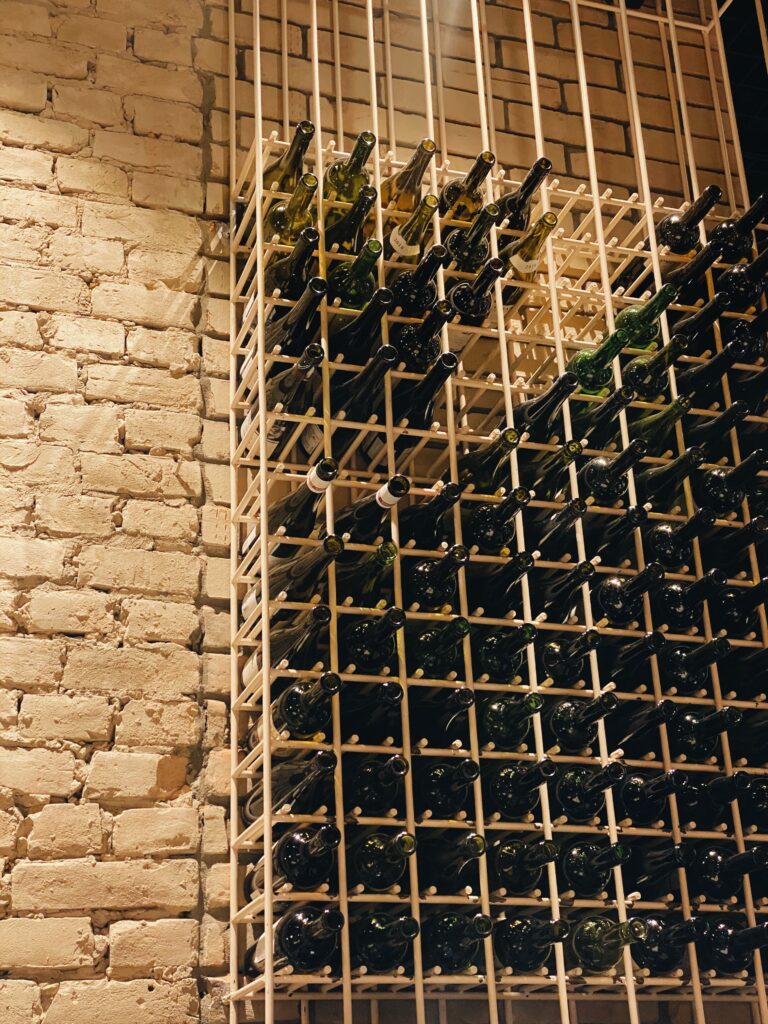Even if we primarily reach for wines that are suitable for immediate consumption, there are also wines that still need time to mature. However, these wines should not necessarily wait for their turn on a wine rack in the living room. We have compiled all the information you need to make it easier to store fine wines correctly.
The good old wine cellar
Traditionally, a wine matures in the cellar – both for winegrowers and privately. Old vaulted cellars are of course particularly stylish. The most important conditions for storing maturing wine are uniform coolness, darkness and tranquillity. There should also be a certain level of humidity. Constant temperature fluctuations should be avoided in any case. This is because higher storage temperatures cause the wine to lose its freshness more quickly. In addition, the wine matures and ages faster than in a cool storage location. If the wine is stored at a warmer or too warm temperature, it loses quality and cannot develop its full potential.
A uniform temperature of approx. 10°C to 16°C is ideal for wine. Even if the corks are nowadays well protected from drying out by a non-porous capsule, which has significantly reduced the importance of humidity in wine storage, a cellar with good ventilation and a humidity level of 70% to 90% is still the ideal solution for long-term storage. If the humidity is higher, this will not damage the wine, but the bottle labels may suffer from the humidity and become illegible, causing the information about the stored wine to be lost.
If wine is stored in a bright place – i.e. under the influence of light – this leads to premature signs of ageing, which are not desirable. In this case, the wine is best stored in boxes or crates. It is important to ensure that the wine is stored horizontally so that the cork is moistened by the liquid and remains moist. In this way, the mouth of the bottle remains securely closed and air cannot get in.
Wine cellar in your own home
If you want to create a suitable wine storage solution on your own, there are various wine racks on the market that are designed as grid systems and can therefore be accommodated in a very space-saving manner and used flexibly. Custom-fit shelves are available for every nook and cranny. Ideally, an alcove or a small space under the cellar stairs should be chosen for mounting or installing the shelves, preferably adjacent to an outside wall.
If a new building is being planned, a suitable cellar room should be provided for wine storage. The necessary shelves for the wine bottles can also be bricked in directly. Brick wine racks offer the advantage that the bricks are cool and can therefore help the wine to maintain a relatively constant temperature.
Storing wines in the home
Maturing wines that need to be stored over a longer period of time are best kept in a wine cabinet in the home. Such cabinets are available in different sizes. They ensure a constant temperature and are also often very attractively designed, so that they definitely deserve an openly visible location in the home.
How long can wine be stored?
Normal, simple everyday wines, which are characterized by freshness, can usually be stored in the refrigerator or cellar for a few days or weeks without any problems – even if the storage conditions are not optimal.
With wines from higher price categories – especially wines of higher quality levels – you have to think much more about storage in order not to jeopardize the money invested and the quality of the wine.

How long does a wine keep?
The shelf life of wines depends on the residual sweetness, the fruit acidity and the alcohol content. Wines with a high sugar content have a very long life. These sweet wines include, for example, ice wines, Beerenauslesen and Trockenbeerenauslesen.
The higher the acidity of a wine, the more suitable it is for longer storage. Experience has shown that wines with acidity levels of 7 per mille or more are characterized by robustness and longevity.
With its bactericidal and preservative properties, alcohol makes an important contribution to wine preservation. For this reason, wines with at least 10 percent alcohol by volume – ideally 12 percent – should be preferred for longer storage periods.
Further tips and information for wine storage:
- The size of the bottles also plays a role in wine storage. Wines in small bottles mature faster and also lose substance more quickly. The maturing process is slower in magnum bottles.
- Paint fixative or hairspray can be used to protect labels from the effects of moisture.
- For very long storage periods – over decades – it makes sense to have a winemaker at your side to help with the re-corking of the bottles, which is necessary every 15 to 20 years or so.
——————————————————-
Related posts:
So noble wine can cool
Design wine refrigerators
Which wine goes with which food













